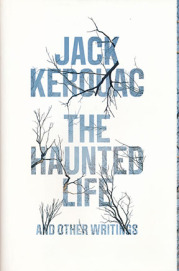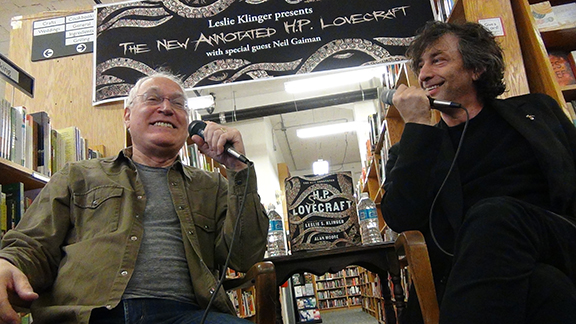 Editor’s Note: Leslie S. Klinger and Neil Gaiman appeared at Magers & Quinn Booksellers in Minneapolis on November 9, 2014, to discuss Klinger’s latest book, The New Annotated H. P. Lovecraft (Liveright, $39.95). Klinger, also the author of The New Annotated Sherlock Holmes and The New Annotated Dracula, has also edited three volumes to date of The Annotated Sandman (Vertigo). What follows is a slightly edited transcript of the pair’s conversation and audience Q&A.
Editor’s Note: Leslie S. Klinger and Neil Gaiman appeared at Magers & Quinn Booksellers in Minneapolis on November 9, 2014, to discuss Klinger’s latest book, The New Annotated H. P. Lovecraft (Liveright, $39.95). Klinger, also the author of The New Annotated Sherlock Holmes and The New Annotated Dracula, has also edited three volumes to date of The Annotated Sandman (Vertigo). What follows is a slightly edited transcript of the pair’s conversation and audience Q&A.
Neil Gaiman: So, Les Klinger, who I’m about to bring on, is my lawyer. And this is actually true. About a decade ago, a little more than a decade ago, a very nice man named Michael Dirda, who used to be the literary editor of the Washington Post, invited me to a meeting of the Baker Street Irregulars—which is the mysterious organization of wastrels and retired judges and people who choose to believe that Sherlock Holmes exists and who know all about him. I learned of the existence of this from reading an Isaac Asimov essay when I was about thirteen, and as far as I was concerned, the Baker Street Irregulars were kind of like unicorns—so I was going to have to go and have dinner with the unicorns. In order to do this, I rented a tuxedo, because I’m not really a tuxedo person, and I walked in incredibly awkwardly, and I saw Michael Dirda, which was a relief because he was the only person there I knew, and he said, “This is Leslie Klinger.” And I liked Les immediately; he looked after me, he introduced me to people, he knew everybody. At that time he was annotating Sherlock Holmes, and he did it brilliantly. And then he did Dracula brilliantly. Somewhere in there he phoned me up and said, “Neil, I should do Sandman.” And I said, “No, that can wait ‘til I’m dead.” [Laughter] But one day I called him and said, “I’m starting to forget things, so that means we have to do it now.”
And also somewhere in there, I discovered that, actually, Les would say things to me things like, “Do you actually have a will?” And I’d go, “Yeah, it’s twenty years old now, and it was written when I was living in a different country and married to somebody else, but yeah, I have a will.” He pointed out that doesn’t actually count, so I asked, “Will you do it?” And he said, “Yes.” And so he is technically my lawyer, and he is making me do grown-up things that need to be done. He knows much more than I do about everything and is one of the nicest people in the world—Leslie.
[Applause]
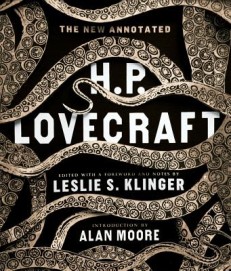 Leslie Klinger: Thank you, although I have to say that when I was talking about doing this tour with another bookseller, he said it was really nice of me to be so supportive of young writers like Peter Straub and Neil Gaiman, and helping them out by letting them have appearances with me. [Laughter] Neil didn’t mention that he wrote the introduction for my Dracula book, and it’s terrific.
Leslie Klinger: Thank you, although I have to say that when I was talking about doing this tour with another bookseller, he said it was really nice of me to be so supportive of young writers like Peter Straub and Neil Gaiman, and helping them out by letting them have appearances with me. [Laughter] Neil didn’t mention that he wrote the introduction for my Dracula book, and it’s terrific.
So we wanted to have a conversation about Lovecraft. By the way, I wanted to point out that this book is the new annotated Lovecraft because there are other annotated versions: S.T. Joshi, probably the world’s greatest Lovecraft scholar, has done three small collections of annotated stories with his own original annotations—I’m not very original, I’ve decided to bring in lots of scholarship, here—and pictures.
NG: So the biggest difference, it seems to me, between Lovecraft and some of your earlier annotations, is that with Sherlock Holmes, you began annotating the stories from the intellectual position that Sherlock Holmes existed, that Watson existed, and that Conan Doyle was just writing down stuff that had happened to them, and wherever it didn’t actually make sense, you needed to explain why.
LK: Right. This is what Sherlockians call “the game.” It’s very productive of interesting avenues of study. When you approach the stories that way, you get a lot more juice out of them, because if these are historical documents, then we can justify examining in minute detail the cultural and historical elements that serve as background in the stories. Plus, Sherlockians love to argue about “Why did Holmes do that instead of this,” “He got this case wrong,” and so on. So that was the approach, there. For Dracula, I did a mixture. Lovecraft was different, but not quite as different as you might imagine, because Lovecraft himself said that to write a great supernatural tale, it was critical that it be done like a hoax. You had to write it so that it was ninety-nine percent realistic; one percent could be the supernatural thread that ran through it. And so, there’s that incredible amount of detail to work with: historical, cultural, scientific, amazing stuff in the background.
NG: Let me just get a quick show of hands, in terms of what we’re going to talk about next: does anyone here—and do not be embarrassed to raise your hand—not know who H. P. Lovecraft was, or not know much about him? [People raise their hands.] Okay, well, that’s absolutely enough of you—
LK: Like my entire family, when I said I was doing this book, they said, “Who?” [Laughter]
NG: So let’s put Lovecraft into some kind of context. Les, who was H. P. Lovecraft?
LK: Well, he was unfairly tagged as a recluse, but he was a strange—and that’s a good word, I think—a strange gentleman who was born in 1890 and died in 1937; he was born and raised in Providence, Rhode Island, and spent all but two years of his life there. He fancied himself to some extent as a sort of reincarnation of an eighteenth-century gentleman. This is probably what many of us writers who don’t sell large quantities of books say, but he disdained the commercial aspects of writing; he actually wrote at some point that if only one reader read his works, that was okay with him, because he wasn’t writing his material for a commercial audience.
He was a polymath, a prodigy who began writing poetry at the age of seven. He wrote an astronomy column in his early teens for the local newspaper—he loved science and astronomy. He did not go to college. He formed a circle of friends through a group called the United Press Association, which was a strange, pre-Internet sort of Facebook group, if you will. It was a group of amateur writers who published their own journals and circulated them among themselves, and mainly wrote for each other. They wrote fiction, essays, poetry, everything. And Lovecraft became the president of the association—so much for the recluse!—but he was mainly communicating with these people via correspondence. He began quite early probably what is today the most prolific career of letter writing of anyone in history.
NG: And he wrote, like, 50,000-word letters!
LK: Absolutely. Some of the letters are seventy pages long. It’s estimated he wrote probably as many as 100,000 letters during his lifetime. Some of them are postcards with cramped little handwriting squeezing in as many words as he could, and some of them are very long. They ranged from his ideas about ice cream and cats and ancient history, to philosophy, politics, and aesthetics. His correspondence included people like Robert E. Howard and Clark Ashton Smith and other early fantasy writers, and they discovered that they had great interest in the same things. That correspondence is being published slowly; there was a Selected Letters that came out in the 1960s, and now we’re up to maybe fifteen volumes of letters that have been published—and there are still dozens more to go. It’s fascinating to read them.
But, Lovecraft wrote only eighty-five stories. Like I said, he was a complete commercial failure. His stories appeared in Weird Tales, which was a pulp magazine. There are some modern equivalents, I guess, but back in those days it was the primary outlet for writers of these genre. And it paid terribly; he was getting twenty-five dollars or so for a story. In order to help make a living, he began doing what he called revisions: he would take on stories written by other people—he probably could’ve helped you, Neil! [Laughter]—and for a fee, he would edit and even rewrite the work. Some of the stories that came out are probably ninety-five percent Lovecraft, five percent author.
NG: Didn’t he write with Harry Houdini?
LK: He did. Houdini people don’t necessarily know, but he was a movie star, he had all these adventure films, and he wanted to write a sort of a spy story about a cult under the pyramids, and Lovecraft was commissioned to write it. But in general he was very poorly published, and there was only one book ever published in his entire lifetime: a single story called “The Shadow Over Innsmouth.” It wasn’t until his death in 1937 from stomach cancer, a really ugly death that he wrote about in some detail in a “death diary,” that his friends decided he needed to be out there, in the world. And they started it.
NG: So you had a local boy . . .
LK: Indeed, August Derleth from Sauk City, Wisconsin, who formed a small company with a friend named Donald Wandrei. Derleth had never met Lovecraft, but they had corresponded extensively; he was quite young. He and Wandrei, who was a good friend of Lovecraft, decided to put out a book called The Outsider and Other Stories. They sent it around to critics, and they actually got some traction with reviews. Then there was more and more.
NG: And they named their press Arkham House.
LK: Yes, after the town in which a lot of Lovecraft’s stories take place. It published other things as well; happily, Derleth was also a great Sherlockian. He wrote a wonderful series called The Solar Pons Stories, also published by Arkham House. But Lovecraft started to get broader and broader attention. And then along came Edmund Wilson. Edmund Wilson was one of the great critics in America—just ask him! [Laughter]—and he wrote a piece about Lovecraft’s writing: he hated it. Hated it, hated it. I think of the movie Amadeus in which the emperor says there are too many notes. That’s sort of how Wilson felt about Lovecraft’s stories: too many words. Lovecraft deliberately cultivated an antiquarian style and used a lot of big words, and that’s probably a quarter of my footnotes—just explaining what those words mean.
NG: I remember as a thirteen-year old trying to read Lovecraft and having to go and find not just the dictionary, but the Oxford English Dictionary—the one in two volumes that came with a magnifying glass—in order to find out what words like “batrachian” meant. Frog-like. The people of Arkham tended to be squamous and batrachian. [Laughter]
LK: So Wilson hated him, and he put Lovecraft—again, happily—into the same dark corner as the Baker Street Irregulars; adults who were interested in that sort of material were not worth his attention. Fortunately we got past that, and Lovecraft was really discovered by the academics in the 1970s, when pop culture became an accepted curricular item, and now he’s taught in a wide range of courses. The real canonization of Lovecraft occurred when Peter Straub edited the Library of America edition, which came out in 2005, I think, and the fact that Norton was willing to do my annotated book in their series is sort of a second boost. So it’s an amazing arc. There is a brilliant introduction to the book written by Alan Moore, by the way, in which he talks about this.
So I want to talk about you and Lovecraft, too. I read Lovecraft very late in life—“late in life” sounds like now!—but you read Lovecraft as a teen.
NG: I did. I was about eleven or twelve. It was a wonderful time to be a lover of fantastic fiction. In America, and to a lesser degree, in England, you had publications which brought Lord Dunsany, James Branch Cabell, all these people back into print.
LK: So this is the ’70s.
NG: This is the very early ’70s. Granada Books in England had an amazing color artist named Bruce Pennington who did these beautiful covers of books that they brought back into print by Clark Ashton Smith. So I picked up the Clark Ashton Smith books and kind of liked them, but they mentioned on the back H. P. Lovecraft. So I found a copy of a book called The Outsider and Other Stories. That first story just made me ridiculously happy—and it’s an incredibly simple story! It’s about a guy who’s sort of climbing up this tower, trying to get away from the dark and the horribleness; he gets to the top of the tower and comes out, but when people see him and scream at him, he realizes that he is a horrible monster, and he goes back into the tower and starts climbing down. Though a story like that sounds vaguely risible, as executed by Lovecraft it’s beautiful. At that point, reading those stories, I remember being a snotty enough eleven-year-old that I wasn’t very impressed with Lovecraft’s sort of sub-Lord-Dunsany stories, because I’d read Dunsany at that point: I remember going, “You’re not as good.” But then I loved “The Call of Cthulhu,” I was just absolutely fascinated with the feeling that you were only seeing the tip of the iceberg. I think that was the thing that attracted me as a teenager to Lovecraft—the idea that he had this huge self-contained universe that perhaps he understood, and things linking the stories, like the Necronomicon of the Mad Arab, Abdul Alhazred—all of these sort of weird things that would crop up that you never quite understood, because it would all drive you mad when you read it, and then you would die at the end of the story, often while writing. And you would die in italics. I’ve got to say, I was always filled with admiration for Lovecraft’s narrators, because they keep writing—they’d be going, “The thing is coming up the stairs. I can hear it. Oh my God, the door is opening.” And you think, “Just put the pen down and run!”
LK: Well, that early exposure explains why you’re you, and I’m a lawyer. [laughter] Lovecraft’s narrators tend to be very ordinary people. They’re people who looked into things that they probably should have left alone. And he really did that well in these stories.
NG: Well, some of them had just moved into houses. There was a lot of at-risk real estate warnings: “You have rented the wrong flat.”
LK: So, “The Outsider” is one of the stories that everybody’s already yelled at me about not including, and a few others that did not make it were “The Shunned House,” “The Rats in the Wall,” and “The Terrible Old Man,” but the stories that are included are, I think, some of his very best: “Call of Cthlulhu,” “The Shadow Out of Time,” “The Shadow Over Innsmouth,” “Charles Dexter Ward,” and my very favorite, At the Mountains of Madness.
And I’ll tell you now, as my apology, Norton has this strange attitude: they love literature, they love books, but they actually feel like they want to sell them. This is very bizarre for a publisher. So there was a size issue: in order to keep it as a $39.95 book, it needed to be merely 860 pages with 300 photos, that sort of thing. So we had to cut something. What I ended up doing as a sort of unifying principle was to include stories that relate to what Neil described as Lovecraft’s universe, or mythos, as it’s known. Some of them are very early stories—“Dagon,” “Beyond the Wall of Sleep”—I think those are important to see his evolving technique and his growth, how he mastered the technique in later stories. Those are the first stories in which we see the mythos appear. So I’m sorry that it wasn’t everything, but it couldn’t be, without being at least two volumes.
NG: One of the things that fascinates me about Lovecraft, and I’m one of the people who this has affected, is the urge to go and play in the sandpit, as it were. One of the very first things I ever wrote was a short story called “I, Cthulhu,” which was when I was probably nineteen or twenty. I’d been reading a lot of Robert Nye, weird autobiographies in weird voices, and I just loved the idea of doing Cthulhu. So, I sat and wrote that, and sent it off to . . . nobody, because I was nineteen. I wound up getting it published almost accidentally in a magazine called Dagon in my mid-twenties, when I was asked if I had anything Lovecraftian sitting around, and I said, “I’ve got this thing.” I gave it to them, and I added a very long letter afterward, a sort of afterward about the correspondences between H. P. Lovecraft and P. G. Wodehouse. [Laughter] I think I was—
LK: This is not a joke, by the way. There are others—
NG: I was the first. I was the first.
LK: Okay, but now, it’s become a whole—
NG: —it’s become a thing. I remember coming up with “Scream for Jeeves,” “It’s the Call of Cthulhu, Jeeves,” [Laughter] . . . Also, I’m talking about P. G. Wodehouse’s H. P. Lovecraft musical, “Cthulhu Summer.” I remember even writing some lyrics for it . . .
I may just be a bird in a gilded cage
A captive like a parakeet or dove
But when a maiden meets a giant lipophage
Her heart gets chewed and broken, like that old adage
—I’m just a fool who
Thought that Cthulhu
Could fall in love
LK: I’m sure everyone in the audience knows about my favorite Lovecraft crossover piece that you wrote, the award-winning, incredible “A Study in Emerald,” in which Holmes meets Cthulhu.
NG: That was a grownup one. As an adult, I wrote two Lovecraftian pieces; one was a story called “Only the End of the World Again,” and then some years later Michael Reaves called me up, and said, “I’m doing an anthology of Sherlock Holmes meets Cthulhu stories. Can you do something for me?” That seemed like the most fundamentally stupid premise for an anthology I’d ever heard, because everything about Holmes is about rationality, everything about Holmes is the idea that things can be understood, that you can look at somebody and deduce that they are a thirty-five year old Latvian housepainter with a deaf left ear and an incontinent cocker spaniel. And everything about Lovecraft is about looking at somebody and not understanding that they are a remnant of a dead god from a formless cosmos whose very real appearance will drive you into madness and beyond. Trying to crossbreed these things is like trying to crossbreed a greyhound with Gibbon’s The History of the Decline and Fall of the Roman Empire . . . they don’t breed.
And then I thought, “Well, hang on. What if I actually made my entire world Lovecraftian and set a Holmes figure in there with the forces of rationality? What would happen then?” There are very few stories that write themselves, but that was one of those lovely occasions where the story kind of did all the work for me. And then I went on to collect Hugo Awards and things for it, and look very smart, and feel very awkward, because I had no idea how I’d done it.
LK: That also birthed another subgenre. I don’t know if you know the computer role-playing game Sherlock Holmes: The Awakening, in which there are serious Lovecraft elements, and things come out that Watson probably didn’t think were going to . . . you started that, too. They probably didn’t send you any money. . . .
NG: No, they didn’t, but that’s alright.
LK: I want raise a topic before anyone in the audience does. There’s been a great deal of controversy recently about the World Fantasy Awards. The statue given to the award winners is a bust of Lovecraft. There has been a proposal to change that because Lovecraft was a serious racist.
NG: He really was.
LK: This is something that is very troublesome about Lovecraft, because when you read his correspondence, it’s very clear that he hated Jews, blacks, Hispanics, Portuguese, Italians—just about anybody who wasn’t an Anglo-Saxon Protestant from Rhode Island. He actually married a Jewish woman, which is kind of hard to understand, because she had assimilated—she was an “okay” kind of Jew, because she didn’t look Jewish or act Jewish, he said. He had a couple friends who were Jewish who had similarly assimilated.
When he went to live in New York for two years, he hated it. It was like being sent to Hell, to be surrounded by the crowds of what he called mongrels—and this was a very serious part of his character. He supported Hitler in the early years; he was also a New Deal supporter, interestingly, and a proponent of eugenics.
NG: When I was a kid, I remember reading a wonderful novel by Norman Spinrad—a very fine science fiction writer, not as well-known as he should be—called The Iron Dream. In the book’s alternate universe, there was a novel written by a former housepainter named Adolf Hitler who had become a science fiction writer, and then come to America and actually achieved some popularity in the ’40s and ’50s as a science fiction writer; his great novel was called Lord of the Swastika. I remember reading it and being kind of both shocked and educated at the places that fantasy and horror take their energy, or can take their energy, from, and the idea of this Hitlerian figure writing an essentially standard science-fiction/science-fantasy/fantasy novel with a lone hero facing the mutant hordes as being all about revulsion at the Other. Lovecraft’s fiction, it seems to me—without wishing to get into a kind of pop psychology—takes enormous amounts of energy from several places: one is just absolute revulsion and fear of other people who are not like him.
There’s obviously a lot of very weird stuff about women in there too—you would never want to sit down with Lovecraft and say, “So, tell me how you feel about female genitalia.” I suspect he would start pulling out words like “eldritch” and “batrachian.”
LK: Fishy! I think you’re right about that. I think psychologists, biographers, etc., have said the outsider was, of course, Lovecraft, himself.
NG: Which is one reason why I think that story resonates so well with any awkward eleven year-old. You read The Outsider and you go, “This is me! I am the creature! That is why nobody likes me, and I’m reading books!”
LK: When you read Lovecraft’s stories, there is very little—with the exception of a story called “The Horror at Red Hook”—overt racism. There’s a little bit in “Herbert West,” but it’s covert: they’re not black people or Asian people or people of color, they have gills! So I think you’re right; the idea that they’re outsiders, and despicable, I think really powers the fiction.
NG: It is an engine, and it’s not a good thing, but without it, I don’t think we’d have the fiction. The H. P. Lovecraft award that is given, the World Fantasy Award, is a sort of Easter Island head . . . .
LK: By the way, in my book I have a picture of the Easter Island statues, because you can compare it to the picture of Lovecraft, and they really do look alike. Which opens up all kinds of strange questions.
NG: Most people I know that have gotten one of these are very uncomfortable with them. I was made a wonderful little bowler hat for mine. I know someone who had a Rastafarian hat with little curls. I would not mind at all if they changed the award. The point is it’s the World Fantasy Award, not the Lovecraft Award. And it’s not about Lovecraft, it’s about fantasy.
LK: I think that racist element really does power his stories. Another factor is that this is a man who had both his parents die in an insane asylum—the same insane asylum, by the way—and was deeply worried that he was going to find himself going insane at some point.
NG: Fear of insanity, even more than fear of monstrous things from beyond the galaxy to whom we are but infinitesimal specks of dust in the cosmic void, is the biggest thing that powers Lovecraft—can you imagine, the body horror of someone who may well be terrified he has some sort of syphilis?
LK: Yes, which is what his father died of, and he called it a mental breakdown. We should also mention that there is a mention of Sherlock Holmes in the book, because I, of course, wrote it. Lovecraft was a Sherlockian, living in those wonderful years when the stories were appearing in The Strand magazine, and he was a teenager at just the right time. He had a little Sherlockian club in which he was Holmes and everyone else had sort of lesser roles . . . and some of the stories clearly have imagery drawn from the stories. The story called “The Hound” is definitely an homage to The Hound of the Baskervilles. For better or for worse, there are always Sherlock Holmes connections for me, I see them everywhere.
We wanted to leave time for questions from the audience . . . does anyone have any questions?
Q: Why H. P. Lovecraft? What drew you to him, his style?
LK: Mainly it was that Norton wanted to do this. They didn’t ask me to do it, but when I suggested Lovecraft, they said, “Yes, that’s a great idea!” I think the reason they reacted that way, and the reason I enjoyed it so much, is because, like Holmes, like the vampire stuff, like Sandman, there is an intense fan following. There is a very, very strong community of Lovecraftians, and that enthusiasm out there has led to a great body of scholarship—not the quantity of stuff that’s in the Sherlock Holmes world, but nonetheless, a lot of amateur writing about Lovecraft that has appeared in various journals. That’s the most important part of the answer, the community aspect.
You have to understand the process for nonfiction writers; unlike Neil, I go to the publisher and say, “I’d like to write a biography about this,” and they say, “Nah.” And I go, “Well, what about this?” and they say, “Nah!” Then, finally, they’ll say, “Yes.” As opposed to Neil, who says, “Well, I have this child here, would you like to adopt him?” [Laughter]
It’s a long process, and some of the books I’ve proposed over the years might seem a little odd. Neil wanted me to do The Jungle Book. I thought, “Wow, that’d be great! All we have to do is convince a publisher to actually publish it.” I wanted to do The Lodger, I don’t know how many of you know that wonderful 1913 novel by Marie Belloc Lowndes; it’s a retelling of Jack the Ripper. I would love to do that. But these are books that are not in the mainstream.
NG: I suppose Lovecraft is interesting in that he has this weird sort of quantum position where he’s absolutely outside of the mainstream, and yet somehow the mainstream has wandered over to the little puddle where he lived, and flooded over him, and now he is everywhere.
LK: Yes, and that is a common thread in the books that I’ve done—people saying, “Oh, maybe that is good stuff!” Look at how hot Sherlock Holmes is right now. And Dracula was discovered in the ’70s by the academics, who said, “Wow, this is great literature.” My next book is on another one of those books, Frankenstein, now adopted by every academic curriculum in the country for queer studies, Marxist studies, feminist studies, etc.—why? People don’t really know why.
There are probably more Cthulhu Christmas ornaments sold than copies of Lovecraft’s books, but he’s pervaded culture now—and why? I wanted to look at that.
Q: Did you go to Providence?
LK: Yes, absolutely. My first trip was the NecronomiCon that was held that summer. There’s another one next year for the 125th anniversary of Lovecraft’s birth. One of the things I loved about doing the research was to see the incredible amount of research that Lovecraft had done. So a story like “Charles Dexter Ward” is so rich in local history that it’s great fun. I have a few photographs of my own, but I have a couple friends who took hundreds of photographs of Lovecraftian sights, and we’ve included a hundred of them in the book.
This is one of the great treats of doing annotated things—I think of it as reverse engineering. When I was doing Sandman, I felt it would be cheating to pick up the phone—since I couldn’t call Arthur Conan Doyle or Bram Stoker—to call Neil and say, “What does this mean?” and “Why is this here?” and all that.
NG: Why have you got him reading a book of poetry that, according to everything I could find, was not published for another eight months? [Laughter]
LK: Well, OK, I nailed you on that one. But by and large it was really fun to do the research and say, “Look! There’s where Neil got that!” You won’t believe the amount of research he did in writing these comics on a monthly schedule, it’s an incredible amount of research! One of my favorites is from one of the first Hob Gadling stories, in which a minor character, an old woman prostitute named Lush Lou, wanders in, and I said, “Boy, does that ring a bell.” I discovered it was from a Victorian account of life on the streets published in 1850, and you had read it, and used it! So that’s a great joy to me, finding this sort of minutiae, if you will.
Q: Are there any movies that capture the spirit of Lovecraft?
NG: I would, oddly enough, just for the ending, point to Cabin in the Woods. Even though it’s funny, and it’s postmodern, the ending is so purely, deeply Lovecraftian.
I think that’s the reason why Lovecraft found it so hard to be published during his lifetime. The underlying spirit of American short story publishing was this wonderful can-do, we will work it out, people are smart, we will conquer things—it’s all about beating things, and winning. Lovecraft is all about going, “Even if we beat this one thing, we are but tiny specks doomed in an incomprehensible universe which hates us.” [Laughter] Which is sort of out of keeping with the can-do spirit of America.
LK: The pulp tradition was very much that brave young men saving large-breasted women sort of thing; Lovecraft hated the other writers in pulp, he didn’t want to be in that company, but it was the only place he could get published.
NG: I would say In the Mouth of Madness, that was an interestingly Lovecraftian movie—I wish Kim Newman were up here, because he would probably spout a bunch of films that you’d never have thought of—“Oh, Tarkovsky!”
LK: I just did a talk at the H. P. Lovecraft Film Festival, and I said, “I don’t think there’s ever been an adaptation of a Lovecraft story that has ever been successful.” They’re very difficult to film, because of the way the story’s told. But my favorite is John Carpenter’s The Thing, which is as Lovecraftian as it gets. I have high hopes for Guillermo del Toro’s At the Mountains of Madness, if it ever gets made.
Q: What do you think of Lovecraft incorporating the writing of earlier writers in his mythos?
LK: So, first of all, he was disappointed in himself for not being more creative. At one point of his career he said, “I see my Poe stories and I see my Dunsany stories—where are the Lovecraft stories?” Clearly, he was a great student of supernatural literature. He wrote a masterful essay called “Supernatural Horror in Literature.”
NG: A really, really good essay. It describes a lot of the threads. You can see people like Arthur Machen and how his story, “The Great God Pan,” is something that Lovecraft fed off.
LK: Absolutely. He was very open to being influenced by other writers.
NG: He was also good about crediting. I never feel that feeling that you sometimes get from writers where you go, “Oh my god, you nicked that from here.” He was always very open and generous about his influences. The essay sends you to places you might not otherwise go—he sends people to writers like Arthur Machen.
LK: And he was very unselfish about his own writing, as well. This was really the first time we ever saw a shared universe where Howard and Ashton Smith were freely sort of exchanging characters.
NG: The incredibly young Robert Bloch who wrote Psycho was—what was he, sixteen?—when he was corresponding with Lovecraft.
LK: Right. So these writers were very willing to co-create things, and pre-Internet, you know. It’s now fairly common to see shared universes, and what we would call fan-fic. This was professional fan-fic, I guess.
NG: One of the loveliest things about his willingness to share, as well, is that it meant that after his death, nobody who owned nor claimed to own nor claimed to control Lovecraft’s fiction ever stopped other people from doing something with the Lovecraft world, which I think is really kind of cool. That genie was already out of the lamp.
Q [from a 5-year-old girl]: I liked Coraline.
NG: Really? It wasn’t too scary?
LK: I take full credit for it. [Laughter]
NG: You know, it’s funny, because Les and I were having a cup of coffee before coming here to talk, and we were talking about H. P. Lovecraft in my stories; I was saying there are big, obvious ones, like “A Study in Emerald,” or whatever. But there are also much less obvious ones, and Coraline was one that I pointed to and said, “Really, that’s probably my most Lovecraftian story, even if it is a Lovecraftian story for little girls of all ages.”
LK: I have a problem with my grandchildren who want to read my books and I generally steer them away from them and point to Neil’s books instead. I said, “But not Sandman. You can’t read Annotated Sandman yet. Sorry.” Lovecraft probably, you know—baby Cthulhu? There’s a market there! But he didn’t go there. [Laughter]
NG: Lots of people have.
Q: What’s your favorite Lovecraft story?
LK: It’s At the Mountains of Madness, for me. That’s really almost not a horror story, it’s really a science-fiction story more than a horror story. If you want to put a label on it.
NG: Julius Schwartz, who was an editor at DC Comics, once told me very proudly that he had been Lovecraft’s agent, and that was Lovecraft’s only major professional sale, and he had done it. I quoted him on that in some introduction, and S.T. Joshi wrote an essay explaining that I was an idiot, [Laughter] and pointed to all these other places, and I’m going, “Well, it’s the guy who told me that who may have got it wrong.”
LK: It was in Amazing Stories. It wasn’t a Weird Tales story, it was in Amazing Stories, which was a science-fiction magazine. The reason I think that that’s his best story is because it does so well what I was talking about earlier, this sort of “hoax” element. It reads for most of the story like almost an academic report on a scientific expedition. The quantity of science in there is incredible—and, as far as I can tell, as a non-scientist annotator, accurate about the geological aspects of the Antarctic, and paleontological things, and so on. It builds up to this incredibly scary finish. So that’s my favorite.
NG: My favorite is probably “The Outsider,” because it was the first, and it was like being hit over the back of the head with an H. P. Lovecraft-shaped brick. Although, I think that beyond that there’s two others: “The Call of Cthulhu” itself, which, again, is a very strange story—it’s built up from a newspaper report, and it doesn’t really have a plot and a storyline and characters, it just convinces you, which I love—and then there’s a story, and I’ve forgotten the name of the story, it was actually finished by August Derleth. It’s one in which Derleth didn’t know that the correct spelling of “caiman,” the alligator, is C-A-I-M-A-N, not C-A-Y-M-A-N.
LK: Was that “The Lurker at the Threshold”?
NG: Yes, definitely something creepy. And it has a Gaiman. These Gaimans hang everywhere, people start turning into Gaimans. I was particularly fond of that. [Laughter]
LK: It’s not in the collection, it’s classed as a revision, and there’s none of the revisions in the book. There is an appendix that lists them all, if you want to track them down.
Q: Did either of you young guys see the Night Gallery episode with Professor Peabody’s last lecture?
NG: No, we didn’t!
Q: Lovecraft is a stuttering student. Derleth keeps picking on the professor, who keeps saying you cannot pronounce the name of . . . And at the very end the professor pronounces it, and becomes a monster.
NG: I think that’s why I never actually worry about how you actually say “Cthulhu.” Les is much more accurate than I am, he just says [mumbles incoherently] [Laughter], I just say Ka-Thu-Lu, because that looks about right. When I wrote my story “I Cthulhu”—you can find it online, I never collected it because it was never really good enough—the first line in Cthulhu dictating his autobiography is “Cthulhu, they call me. Great Cthulhu. Nobody can pronounce it right.” [Laughter]
The idea is, if ever you actually pronounce it correctly, rather like pronouncing the name of God in Jewish Kabbalistic thinking, the world ends, and you definitely turn into something incomprehensible, with too many tentacles.
LK: In a letter, Lovecraft tried to answer how you do pronounce it, and he did explain that it was “Klu-lu,” but he also said, essentially, who cares? It’s an unpronounceable name; that was the whole idea. It was not a human tongue that uttered this name.
NG: It’s something weird and whistle-y. Batrachian. [Laughter]
LK: Well, I want to thank this young writer for coming up to help me today. Thank you. Do you want to say something about not signing, or. . . ?
NG: Oh, I’ll sign. [Applause]
LK: You could sign my books! [Laughter]
NG: I will sit next to Les, and we’ll see how this goes. They do have books by me here. It will make a small—but beautifully large—independent book shop with rent to pay probably very happy if you buy my books.
LK: And you’ll want Klinger signed books, because they are really rare. [Laughter]
NG: Thank you so much for such great questions, everybody.


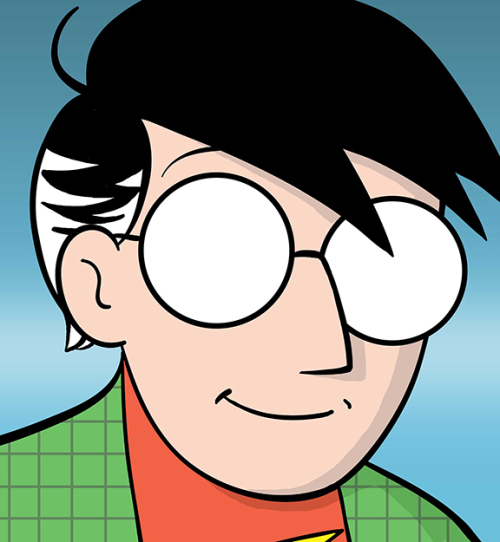
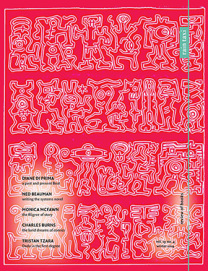 Michael Jacobson is a writer and artist from Minneapolis, Minnesota USA. His books include The Giant’s Fence, Action Figures, Mynd Eraser, and The Paranoia Machine; he is also co-editor of An Anthology Of Asemic Handwriting (Uitgeverij). Besides writing books, he curates a gallery for asemic writing called
Michael Jacobson is a writer and artist from Minneapolis, Minnesota USA. His books include The Giant’s Fence, Action Figures, Mynd Eraser, and The Paranoia Machine; he is also co-editor of An Anthology Of Asemic Handwriting (Uitgeverij). Besides writing books, he curates a gallery for asemic writing called 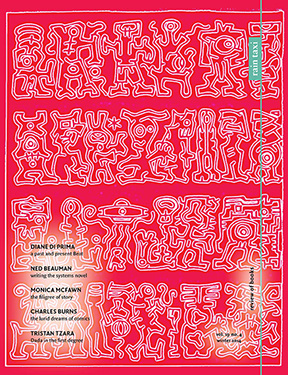
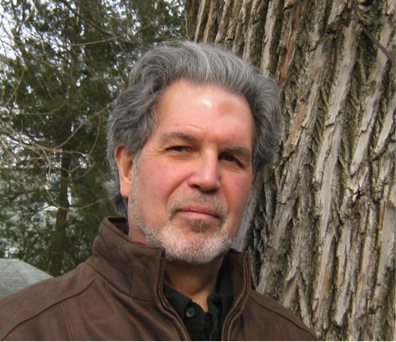 by Eric Hoffman
by Eric Hoffman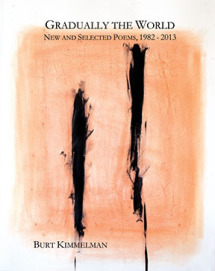
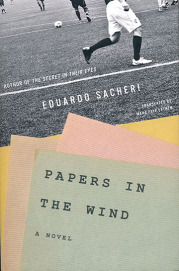
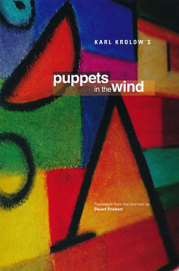
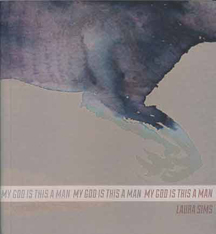
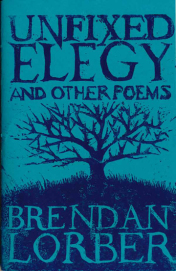 Brendan Lorber
Brendan Lorber